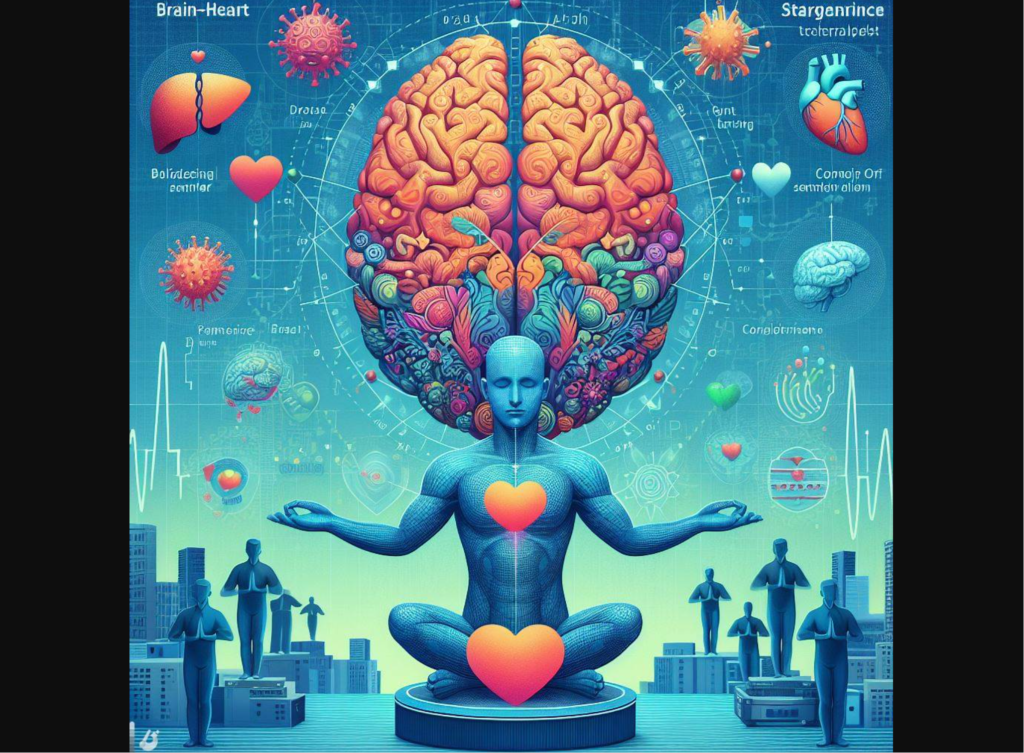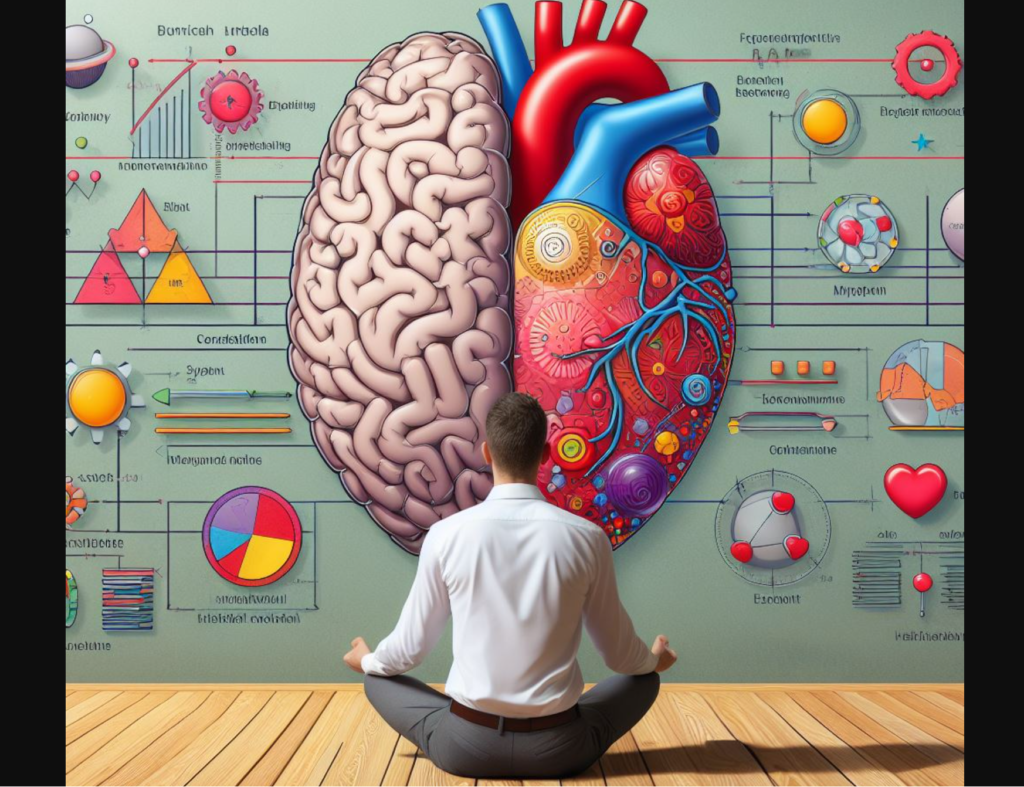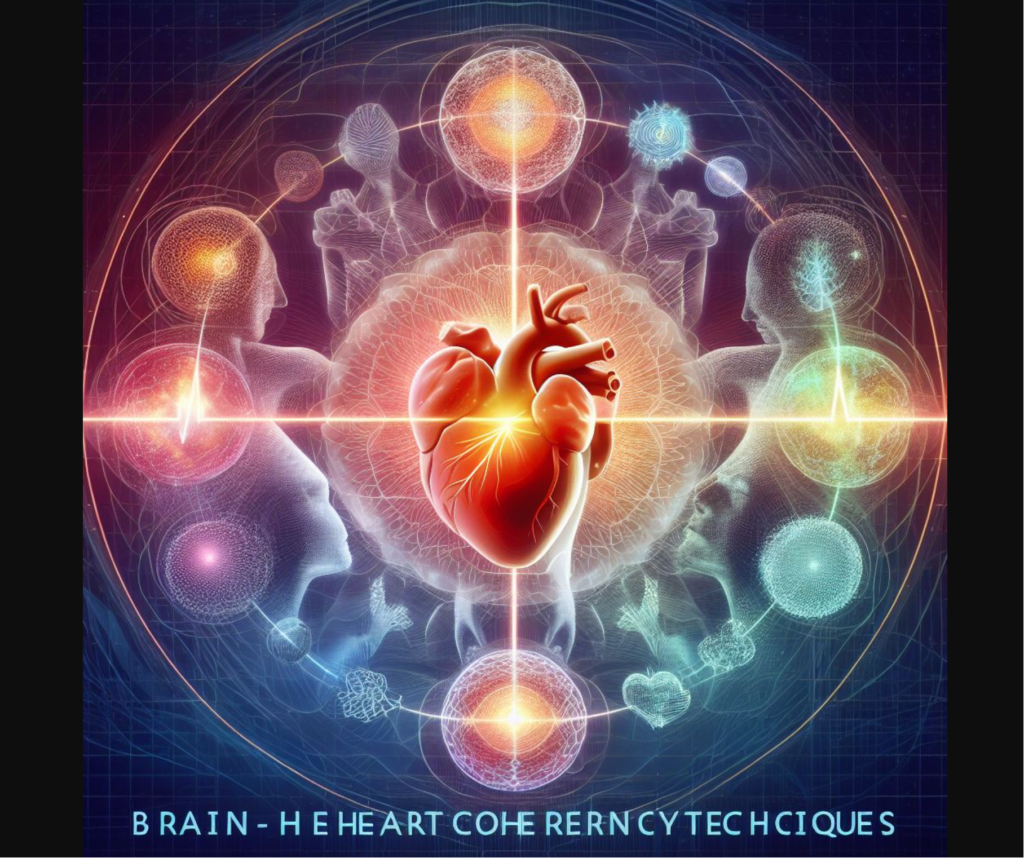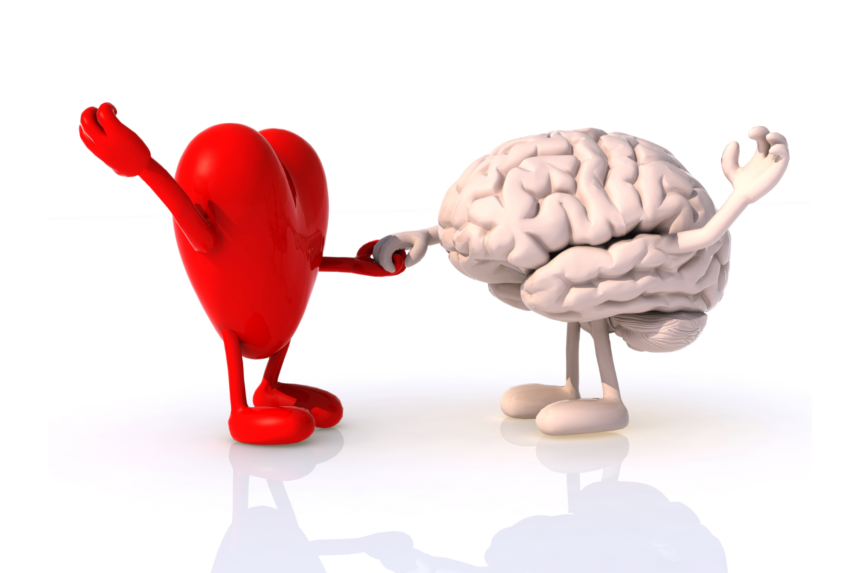Brain-Heart Coherence : In the intricate dance of our existence, the connection between the brain and the heart plays a vital role. These two powerhouses communicate incessantly, influencing our emotions, health, and overall well-being. Brain-heart coherence techniques aim to harmonize this dynamic duo, fostering balance and resilience. Let’s explore these practices and their impact.
Understanding Brain-Heart Coherence
- The Autonomic Nervous System (ANS): Our ANS governs involuntary bodily functions, including heart rate, digestion, and stress responses. It splits into two branches:
- Sympathetic Nervous System (SNS): Activated during stress or danger, it prepares us for “fight or flight.”
- Parasympathetic Nervous System (PNS): Promotes relaxation, rest, and recovery.
- Heart Coherence: When our heart rate variability (the time interval between heartbeats) becomes rhythmic and coherent, it aligns with the PNS. This state is associated with emotional balance, mental clarity, and physical health.
Also read : Skin Sensation Unveiled: The Intricate Dance Of Touch Detection On Your Fingertips

Techniques to Enhance Brain-Heart Coherence
- Deep Breathing: Slow, intentional breaths activate the PNS, calming the mind and synchronizing heart rhythms. Try the 4-7-8 technique: inhale for 4 seconds, hold for 7, and exhale for 81.
- Mindfulness Meditation: Mindfulness cultivates present-moment awareness, reducing stress and promoting heart coherence. Focus on your breath, sensations, or a mantra.
- Yoga: Yoga combines movement, breath, and mindfulness. Asanas (poses) enhance flexibility, while pranayama (breathing exercises) harmonize heart and mind.
- Visualization: Imagine positive scenarios – serene landscapes, loved ones, or achievements. Visualization activates the PNS and boosts coherence.
- Progressive Muscle Relaxation: Tense and release muscle groups systematically. As tension dissipates, heart rhythms align with calmness.

Quick Coherence Technique
- Purpose: Achieve coherence in about 60 seconds.
- Steps:
- Focus on your heart area.
- Breathe deeply and evenly.
- Recall a positive memory or feeling.
- Experience gratitude, compassion, or love.
- Allow these emotions to fill your heart space.

Scientific Backing
- HeartMath Institute: Research by HeartMath explores heart-brain interactions. Coherent heart rhythms enhance cognitive function, emotional stability, and overall health.
- Neurocardiology: Scientists study the heart’s intrinsic nervous system. Neurons in the heart communicate with the brain, influencing perception, decision-making, and emotional regulation.
Practical Applications

- Stress Management: Coherence techniques mitigate stress responses, improving mental resilience and immune function.
- Emotional Regulation: By fostering positive emotions, we enhance heart coherence and overall well-being.
- Performance Enhancement: Athletes, musicians, and professionals use these techniques to optimize performance under pressure.
Conclusion
Brain-heart coherence isn’t mere theory; it’s a tangible bridge between our inner worlds. As we practice these techniques, we align our rhythms, creating a symphony of health, clarity, and compassion.
Remember, as you breathe, your heart listens, and as your heart beats, your brain responds – a beautiful symphony within you.
References:
- What Is Brain & Heart Coherence? – Alleviant Health Centers
- Heart Coherence: The New Breathing Technique to Calm Anxiety – BetterSleep
- Quick Coherence Technique for Adults | HeartMath Institute
Frequently Asked Questions (FAQ) – Brain-Heart Coherence Techniques
1.What is brain-heart coherence?
Brain-heart coherence refers to the synchronized and harmonious rhythms between the brain’s electrical activity (brainwaves) and the heartbeat. Achieving coherence involves aligning these rhythms to promote a balanced and optimal state of well-being.
2.Why is heart rate variability (HRV) important in brain-heart coherence?
Heart rate variability is a key indicator of the flexibility and adaptability of the cardiovascular system. Higher HRV is associated with better stress resilience and indicates a more coherent state between the brain and the heart.
3.What are the benefits of practicing brain-heart coherence techniques?
- Stress Reduction: These techniques can reduce stress levels and promote emotional balance.
- Enhanced Cognitive Function: Regular practice is linked to improved focus, clarity, and decision-making.
- Cardiovascular Health: Brain-heart coherence contributes to better blood flow, reduced blood pressure, and overall cardiovascular well-being.
4.What are some common brain-heart coherence techniques?
- Heart Rate Coherence Breathing: Rhythmic breathing to align heart and breath rhythms.
- Biofeedback and Wearable Devices: Real-time feedback from devices measuring heart rate variability.
- Meditation and Mindfulness: Practices that cultivate present-moment awareness and focus.
- Heart-Centered Imagery: Visualization techniques centered around positive emotions and heart-focused imagery.
How can brain-heart coherence be incorporated into daily life?
- Consistent Practice: Regularly engage in coherence techniques for lasting benefits.
- Mindful Moments: Take short breaks for mindful breathing or coherence practices throughout the day.
6.Can brain-heart coherence practices improve cardiovascular health?
Yes, achieving coherence between the brain and the heart has been associated with better blood flow, reduced blood pressure, and overall cardiovascular resilience, contributing to better heart health
7.Are there specific mindfulness practices that promote brain-heart coherence?
Yes, mindfulness practices such as meditation, mindful breathing, and focusing attention on the heart center are common elements in promoting brain-heart coherence
8.How long does it take to experience the benefits of brain-heart coherence practices?
The timeframe for experiencing benefits may vary among individuals. Consistent practice over time is generally recommended for optimal and lasting results.
9.Can brain-heart coherence techniques be helpful for managing stress?
Yes, one of the primary benefits of these techniques is stress reduction. The synchronization between the brain and the heart promotes a shift from the stress-inducing sympathetic mode to the calming parasympathetic mode.
10.Are there specific situations where brain-heart coherence techniques are particularly beneficial?
Brain-heart coherence techniques can be beneficial in various situations, especially during stressful periods, before important tasks, or as a regular practice for overall well-being. They provide tools for managing the demands of daily life effectively.
Also read : Heart Health Unveiled: New Research Highlights The Dangers Of Prolonged Sitting




































